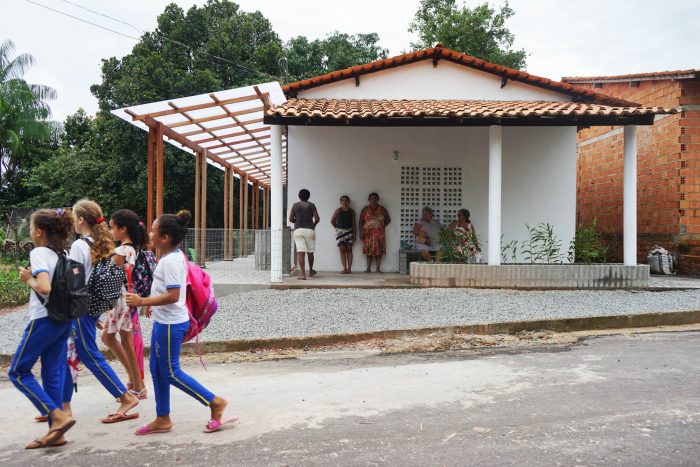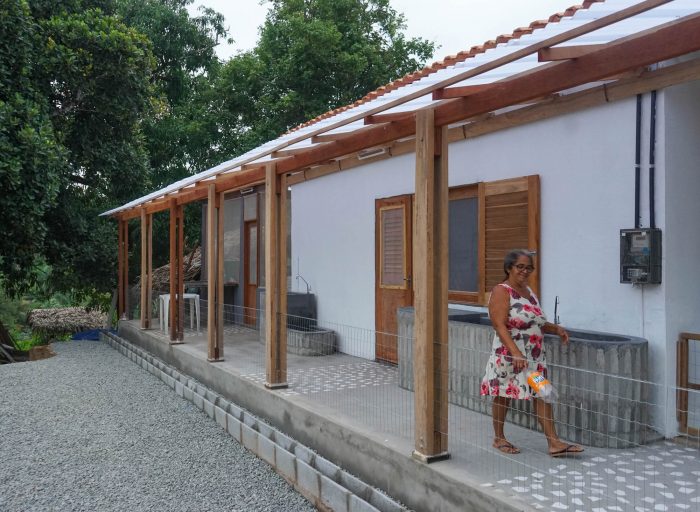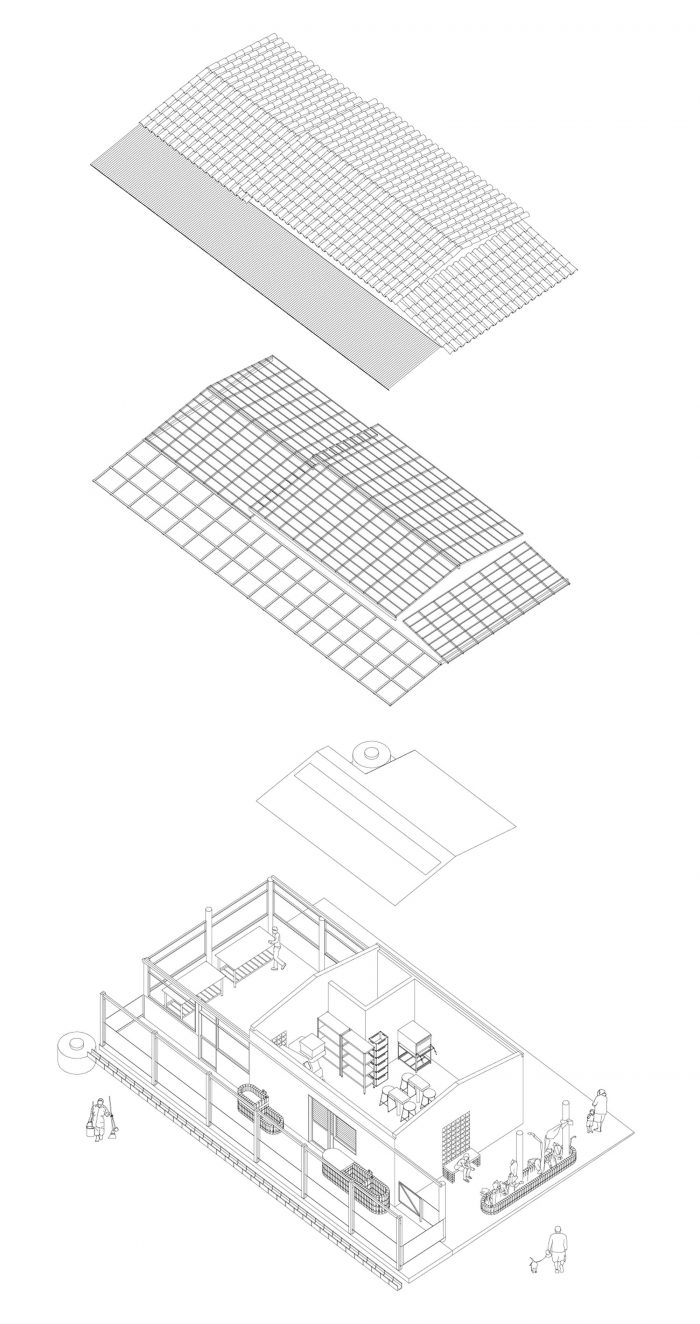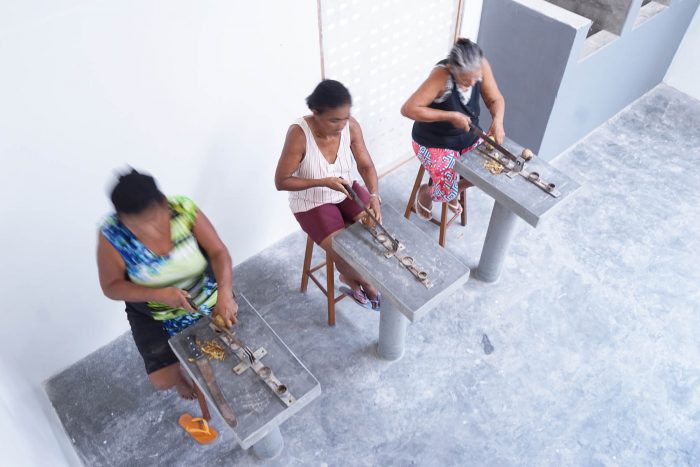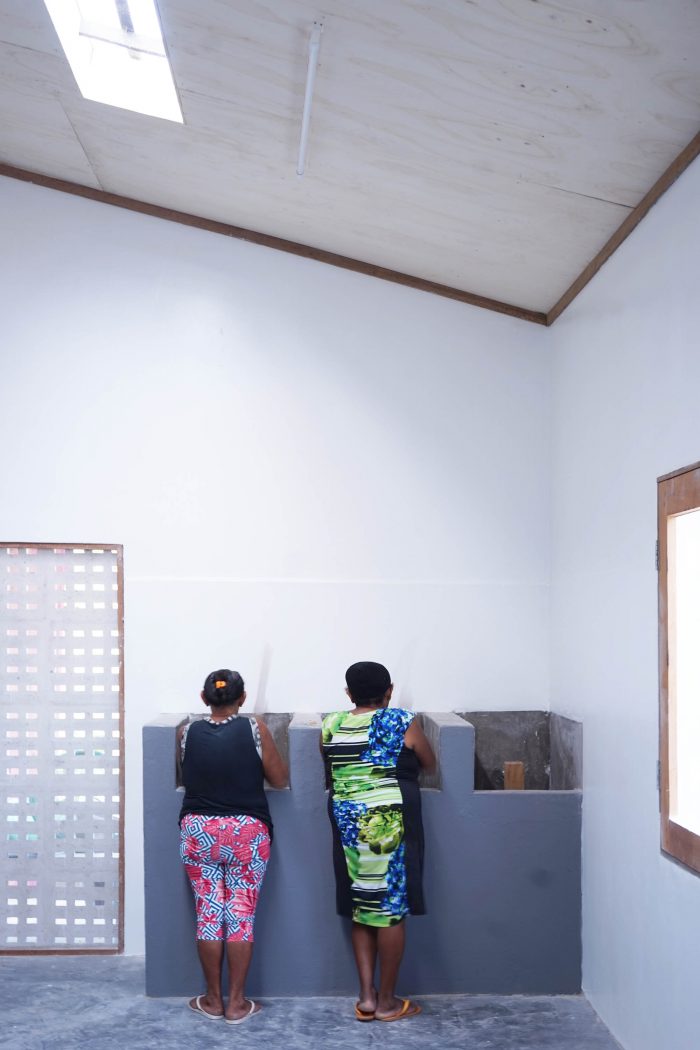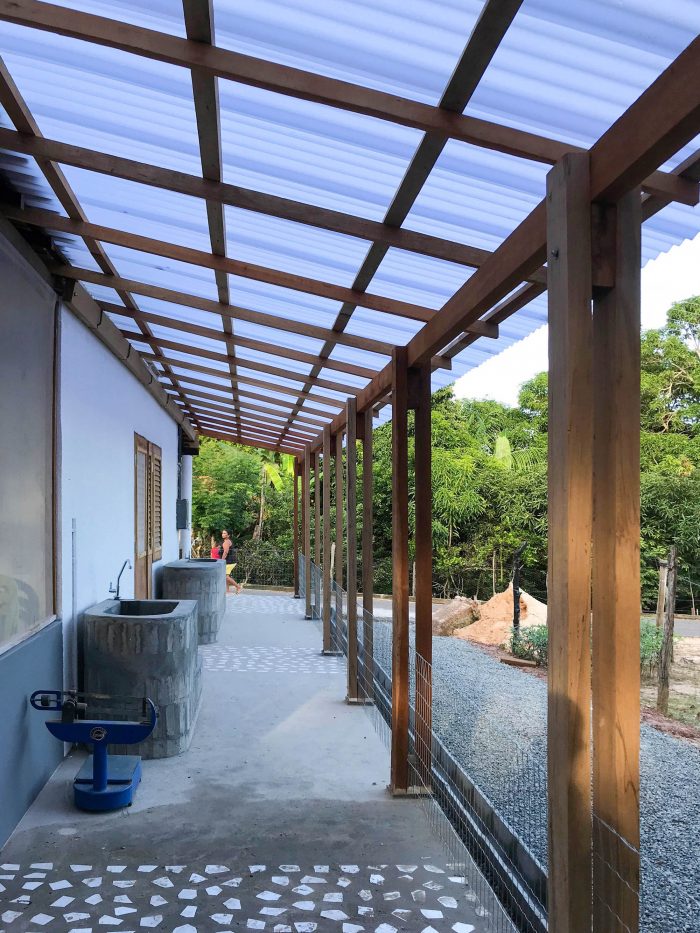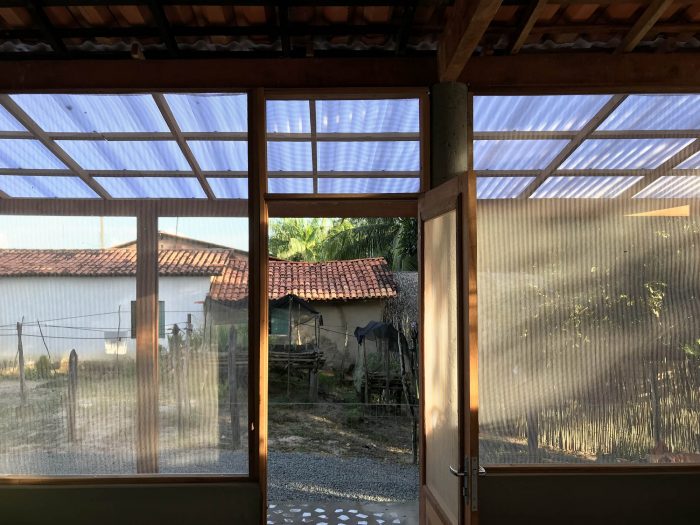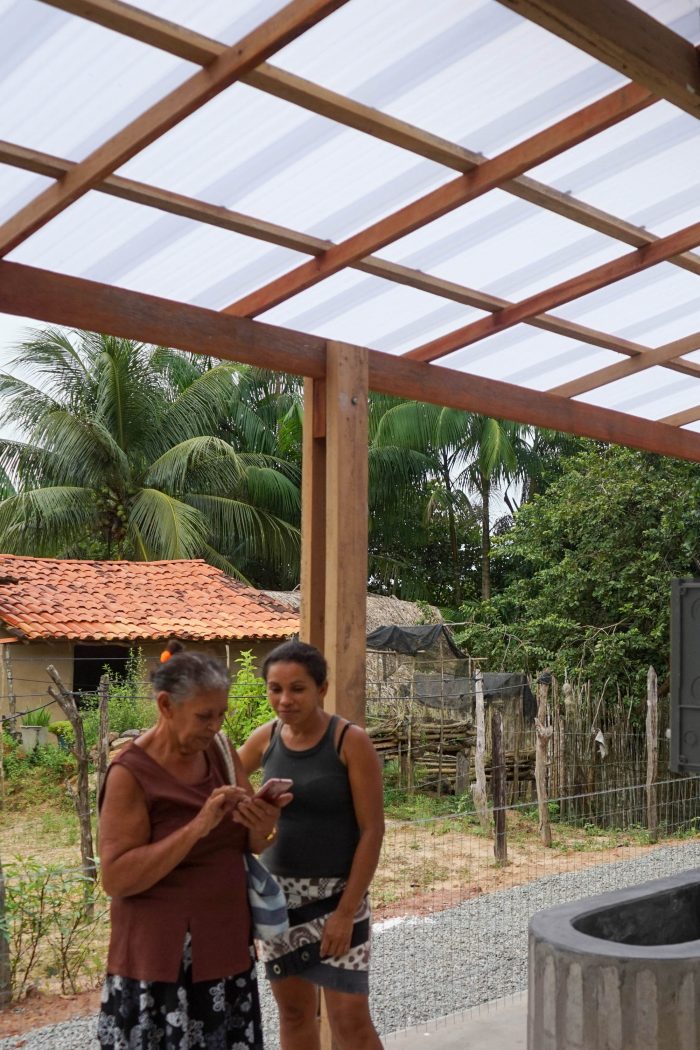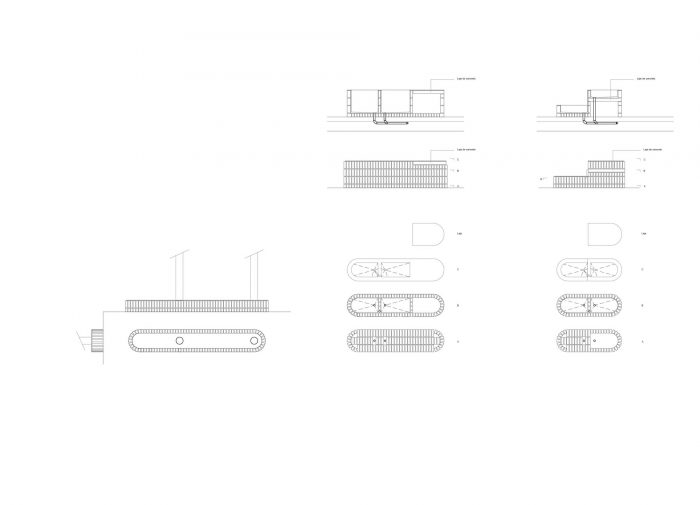该项目位于马拉尼昂州 “马托 “生物圈内的一个小型农村社区–塞拉。该项目包括扩建和翻修现有建筑,以扩大由18名妇女组成的 “巴巴苏椰子 “小组生产的巴巴苏面粉的规模。quebradeiras “是收集和手工打碎巴巴苏椰子以获得油和面粉的妇女。来自quebradeiras的巴巴苏最终被用于面包、蛋糕、清洁材料、化妆品、饮料、手工艺品、人造黄油、粥和肥皂。该项目旨在通过扩建现有建筑、升级材料和重新安排内部布局来改善生产设施,以满足卫生认证。产品可以更广泛地商业化,增加妇女群体的经济回报。
The project is located in Serra, a small rural community within the ‘Mato’ biosphere in the State of Maranhão. It consists of the extension and refurbishment of an existing building to up-scale the production of babassu flour produced by an 18-women group of ‘quebradeiras de coco de babassu’. The ‘quebradeiras’ are women that collect and hand-break babassu coconuts to obtain oil and flour. Babassu from the quebradeiras ends up in bread, cakes, cleaning materials, cosmetics, drinks, handicrafts, margarine, porridge, and soap. The project aims to improve the production facilities by extending the existing building, upgrading materials, and re-arranging the internal layout to meet hygienic certification. The produce can be commercialized more extensively increasing the economic return for the group of women.
该设计是在与魁北克集团的密切磋商下制定的。在现场举行的研讨会有助于确定每个妇女对新建筑的愿望和期望,从首选材料到程序和空间要求。在设计和施工的各个阶段,她们的持续投入为项目提供了信息。这些建议通过实物模型和清晰的布局进行了沟通。该项目在现有建筑的前面增加了新的有盖通道和休息区。这个扩展的门槛区作为社区和团体quebradeiras之间的交汇点,具有一个花盆和一个用混凝土铺设的长凳。现有的前门和后门被拆除,取而代之的是穿孔砖墙,以实现自然交叉通风。现有建筑一侧的新服务区的木材结构由磨砂聚碳酸酯板覆盖,允许70%的日光通过,同时阻挡有害的紫外线。
The design was developed in close consultation with the group of quebradeiras. Workshops in situ helped to identify the aspirations and expectations of each woman towards the new build, from the preferred materials to the program and space requirements. Their continuous input informed the project throughout all the stages of design and construction. The proposals were communicated using physical models and clear layouts. The project adds new covered access and break-out area to the front of the existing building. This extended threshold zone acts as the meeting point between the community and the group quebradeiras featuring a planter and a bench made with concrete pavers. The existing front and back doors were removed and replaced by perforated brick walls to allow for natural cross ventilation. The timber structure for the new service area to the side of the existing building is covered by a frosted polycarbonate sheet that allows for 70% of daylight through while blocking nocive UV light.
该区域的抛光混凝土地板采用了拆除工程中保留的一些瓷砖。用于清洁椰子的定制水箱是用现场外生产的混凝土铺路,并在所有内部表面涂上一层砂浆。所有固定的家具和设备都是与这群妇女合作设计的,考虑到首选的高度和整体尺寸,以最适合她们的身体和工作姿势。生产区的整修包括一个新的天花板,并与现有的木制屋顶结构相连。通过用半透明的聚碳酸酯板取代现有屋顶的一些陶瓷瓦片,也创造了一个新的天窗。
The polished concrete floor in this area incorporates some tiles kept from the demolition works. The bespoke water tanks to clean the cocos were made with concrete pavers manufactured off-site and finished with a layer of mortar to all internal faces. All fixed furniture and equipment were designed in collaboration with the group of women, considering preferred heights and overall sizes to best suit their bodies and working positions. The refurbishment of the production area includes a new ceiling lined and attached to the existing timber roof structure. A new skylight was created too, by replacing some of the ceramic tiles of the existing roof with translucent polycarbonate sheets.
建筑师:Estudio Flume
面积:102 m²
年份:2020年
照片:Noelia Monteiro, German Nieva
制造商:Amanco, Blender, Casa da Madeira, Deca, Forlux, Freecad, Glight, Ibrap, Librecad, Lorenzetti, Ourolux, Paloma pré-moldados, Suvenil, Tigre, Tramontina
首席建筑师:Christian Teshirogi, German Nieva, Noelia Monteiro
城市:圣伊内斯
国家:巴西
Architects: Estudio Flume
Area: 102 m²
Year: 2020
Photographs: Noelia Monteiro, German Nieva
Manufacturers: Amanco, Blender, Casa da Madeira, Deca, Forlux, Freecad, Glight, Ibrap, Librecad, Lorenzetti, Ourolux, Paloma pré-moldados, Suvenil, Tigre, Tramontina
Lead Architects: Christian Teshirogi, German Nieva, Noelia Monteiro
City:Santa Inês
Country:Brazil


